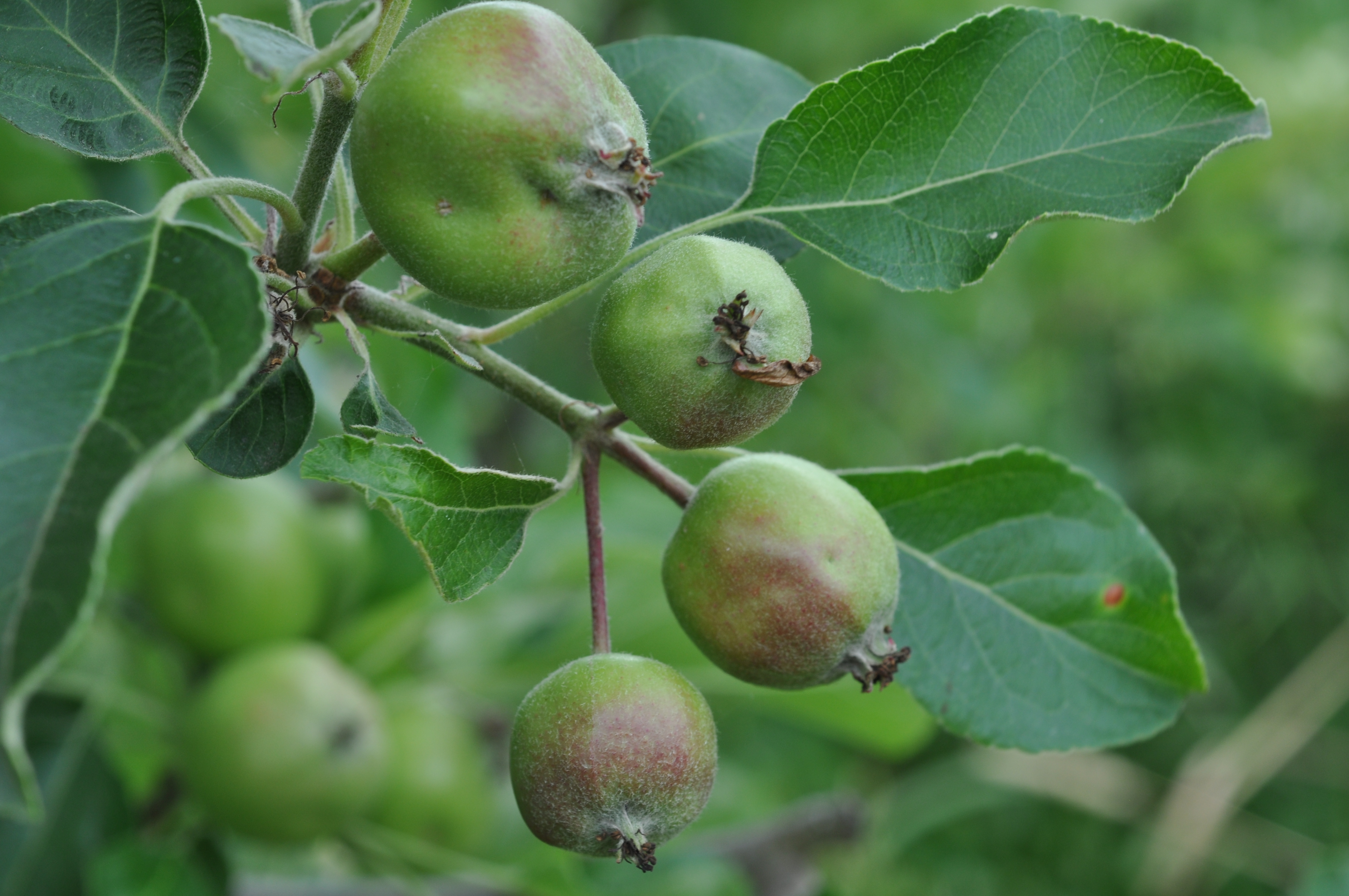Apple dimpling bug (ADB) Campylomma liebknechti can be a serious pest of apples on the Australian mainland. This is not the bug that causes similar damage in Tasmania.
Damage is caused by the bugs feeding on the ovaries of flowers in spring, causing dimple-like deformities on developing fruit. The bugs are small, active, and often occur in high numbers almost overnight depending on weather conditions. Previous attempts to develop thresholds for ADB were based on the number of bugs detected by blossom jarring but this proved problematic due to variation in the length of the flowering period and inclement weather sometimes interfering with sampling. To overcome this a threshold based on bugdays (cumulative bug activity) over the flowering period was developed in NSW.
Bugdays are calculated by taking the average number of bugs captured on two sample dates and multiplying that by the number of days between samples. For example, if on the first sample date 2 bugs were captured and 7 days later 4 bugs were captured the average number of bugs = (2+4)/2=3, and the number of bugdays would be 3×7=21. The time available for ADB to damage fruit is the approximately 30 days between late pink bud and two weeks after petal fall even though bugs may be present after this time. The economic threshold (ET) developed in NSW was based on spraying with fluvalinate. The ET for the total of 30 days was 44 bugdays based on sampling 100 flower clusters each sample date. The spray threshold (or action threshold) was then calculated as ST=ET/(FP-d) where FP=length of flowering period (late pink to 2 weeks after petal fall) and d= number of days after late pink bud. Using the ET of 44 bugdays and a flowering period of 30 days the equation becomes ST=44/(30-d). This means that at late pink the spray threshold is 44/30=1.47 bugdays; at 7 days after late pink ST=44/(30-7)=44/23=1.9 bugdays; at 14 days after late pink ST=44/16= 2.75 bugdays; at 21 days after late pink ST=44/9=4.9 bugdays; and at 28 days after late pink ST=44/2=22 bugdays.
The very low threshold between pink and full bloom generally justifies a prophylactic spray being applied at late pink and then the use of the variable threshold to determine if a further spray is required later in the flowering period. It is important to minimise the number of sprays applied because those sprays can have a drastic impact on the survival of predatory mites, that control twospotted and European red mites, and parasitic wasps that control other pests. Chemicals other than fluvalinate are now registered against ADB and the spray thresholds for those products are likely to be higher, although they have not yet been determined.
Further Information:
Managing Apple Dimpling Bug https://www.agric.wa.gov.au/pome-fruit/managing-apple-dimpling-bug

